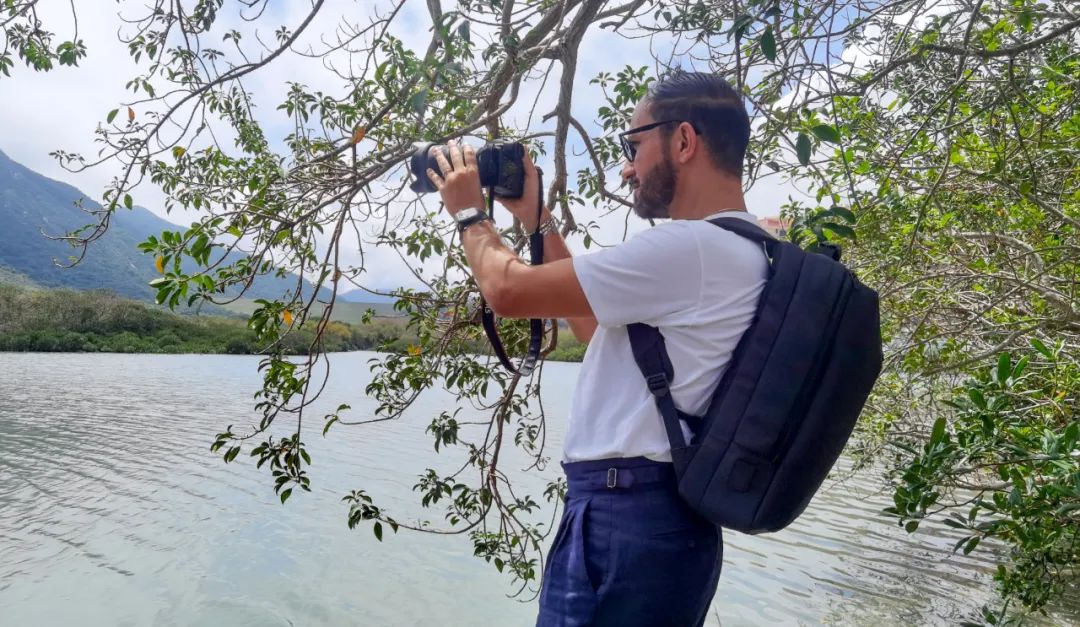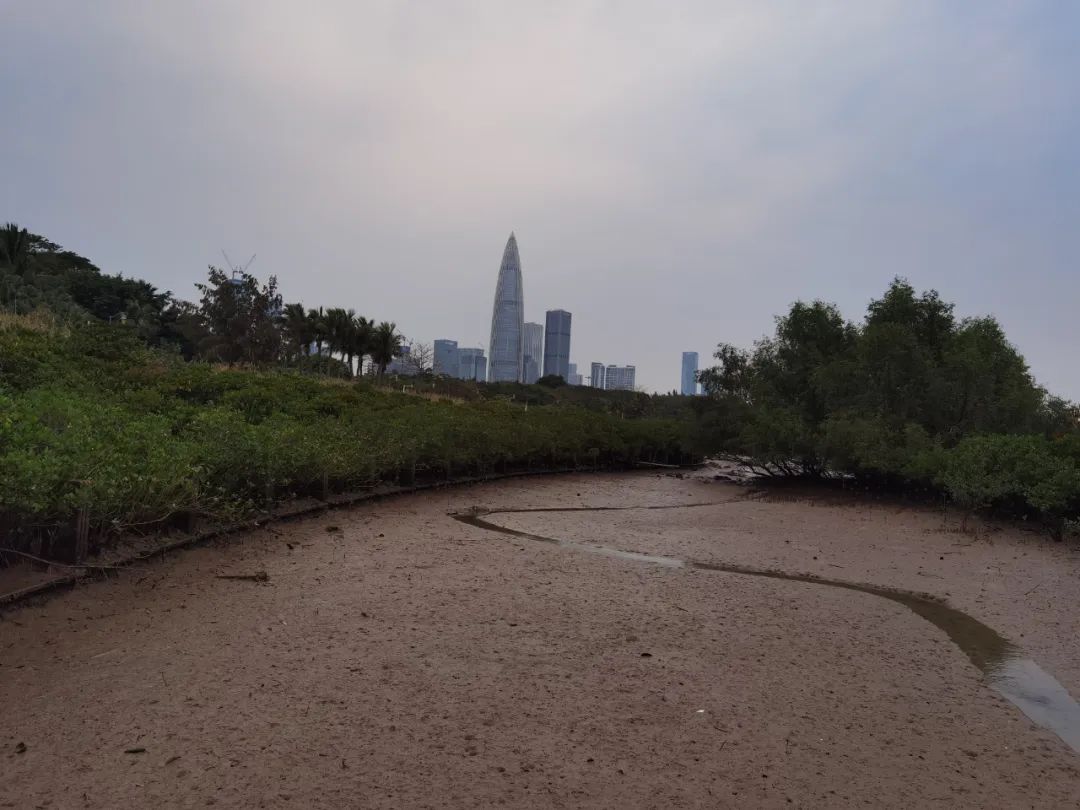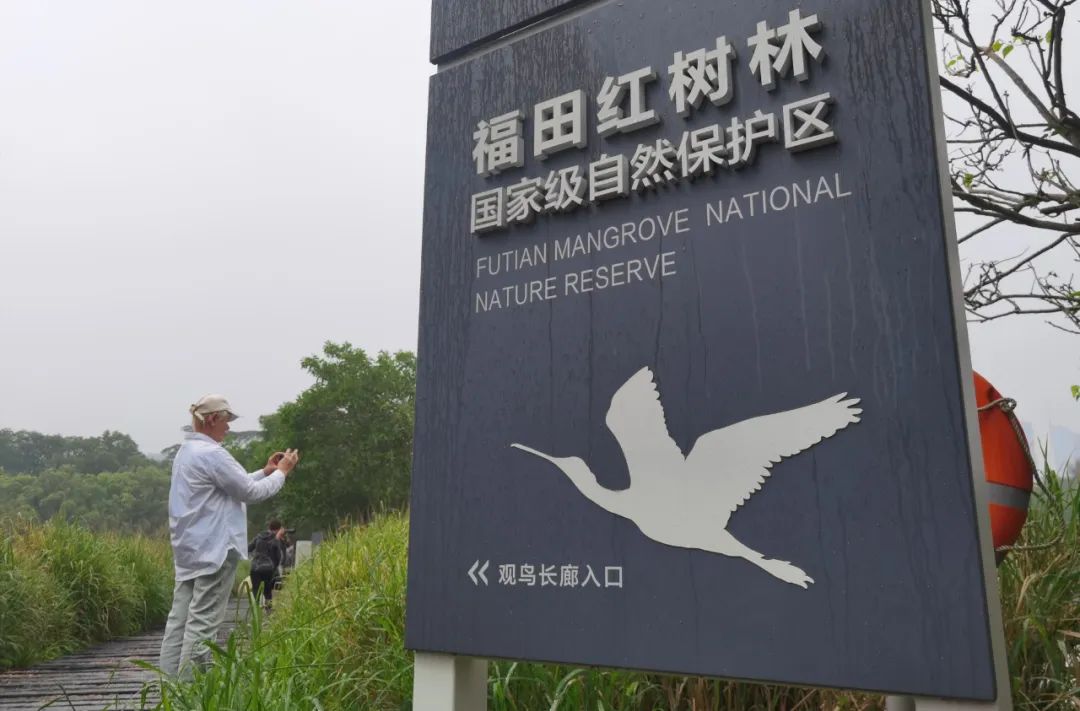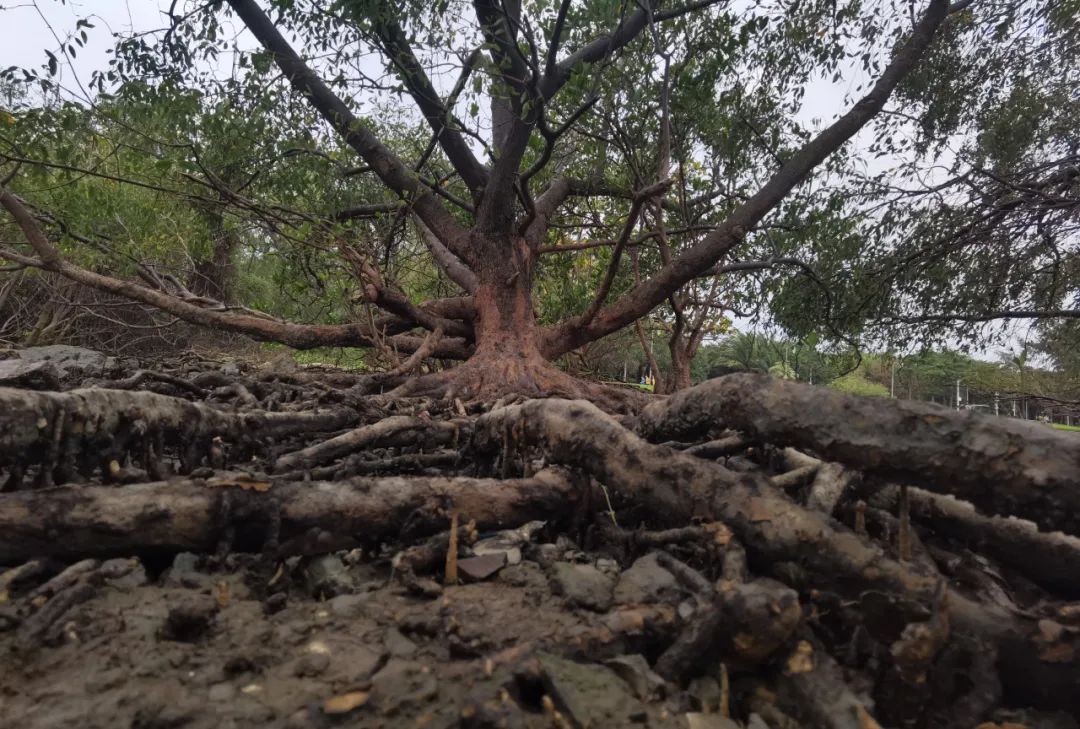
Video and photos by Liu Xudong.
A carpenter bee hovers above some flowering Acanthus ilicifolius L. trees, searching for nectar among the white flowers. The plant is a common mangrove species in Shenzhen.

A view of the mangrove forest in Futian Mangrove National Nature Reserve.
The word mangrove does not refer to a single species, but to a genus consisting of about 80 species around the world. When different species of mangrove grow together, they form a forest by the sea that protects the coast from wind and waves.

Part of the mangrove forest of Xiwan Mangrove Wetland Park in Bao'an District.
Matteo Convertino is an associate professor at the Institute of Environment and Ecology of Tsinghua Shenzhen International Graduate School and the principal investigator of the school's Future Ecosystem Lab (TREES).

Matteo Convertino takes photos of mangrove forests in Dongchong, Dapeng New Area.
Mangroves are found along the coastlines of tropical and subtropical regions. Their bark is rich in tannin, which is easily oxidized by air to a reddish color, hence their Chinese name “Hongshu” (meaning “red trees”). Tannin, which is a natural antiseptic, is unpalatable to intertidal benthos and thus prevents mangrove trees from being consumed. To survive wind and waves, mangrove trees have strong, intertwined roots that allow them to anchor themselves to the shore. They also have several finger-like lateral roots that grow upward out of the mud and water to serve as oxygen intake sites for the submerged primary root system. Interestingly, they excrete excess salt from their bodies, with some species having special secretors to help them expel salt from the seawater they consume.

The wetland and mangroves of Shenzhen Bay Park in Nanshan District.
One of the most remarkable characteristics of mangrove species is that they reproduce by viviparity, which means that the seeds germinate into propagules before they are shed from the parent tree and then fall directly onto the mudflats. It can take only a few hours for a propagule to take root in the mud. Even if it does not colonize near its parent, the propagule can remain viable for several months and can travel thousands of kilometers on currents until it finds a new coast to establish itself.

A mangrove tree in Dongchong.
As Shenzhen’s city tree and as an important wetland plant species, local mangrove populations in the city are mainly found in the Futian Mangrove National Nature Reserve, which is the smallest national nature reserve in China. It is home to rare mangrove species such as Excoecaria agallocha Linn., Bruguiera gymnorrhiza (L.) Savigny, Kandelia candel (Linn.) Druce, and Kandelia obovata, and is an important stopover for migratory birds on the East Asian-Australasian flyway. The reserve, together with Hong Kong’s Mai Po Nature Reserve across Shenzhen Bay, forms the Deep Bay Wetlands ecosystem.

A resident takes a photo at Futian Mangrove National Nature Reserve.
Mangroves help protect coastlines, purify seawater, maintain biodiversity, reserve blue carbon from the coastal ecosystem and beautify the coastal landscape, hence the name “Coastal Guardians.” Statistics show that mangroves reduce economic losses of over US$65 billion and protect a population of around 150 million from flooding every year. Regardless of ebb and flow, mangroves thrive along the coastline, dedicated to protecting our planet.

A mangrove tree at Shenzhen Bay Park.
However, in recent decades, the global mangrove cover has been rapidly decreasing due to human activities and climate change. According to a report published by the Global Mangrove Alliance (GMA), mangroves around the world are declining by up to 2% each year. Yet in China, the total mangrove cover has increased by more than 23% in the last 20 years.

Residents visit Futian Mangrove National Nature Reserve.
China proposed the establishment of an international mangrove center in Shenzhen at the opening ceremony of the 14th Meeting of the Conference of the Parties to the Ramsar Convention on Wetlands (COP14) on November 5, 2022. This reflects the country's determination to participate in global governance and promote global wetland conservation, and is of great significance for global mangrove reforestation, scientific research and sustainable development.

The Xiwan Mangrove Wetland Park.
In the near future, the Shenzhen Mangrove Wetland Museum, a new first-class national museum in China, will be built by Shenzhen Bay. The museum will become a landmark for mangrove conservation, exhibition, collection, education, scientific research and tourism, and will also serve as a new calling card for Shenzhen.
Source | Shenzhen Daily
















